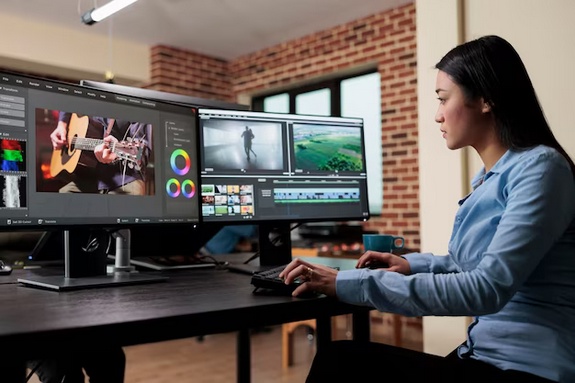Introduction:
The landscape of audiovisual technology services has undergone a remarkable transformation over the years, shaping the way we perceive and interact with sounds and screens. This evolution has been driven by advancements in both hardware and software, resulting in immersive experiences that have become integral to various aspects of our lives. In this deep dive, we will explore the key milestones in the evolution of audiovisual technology services, from humble beginnings to the cutting-edge innovations of today.
The Birth of Audiovisual Technology:
The journey of audiovisual technology services began with the invention of the phonograph in the late 19th century, marking the first instance of capturing and reproducing sound. This breakthrough paved the way for the development of cinema in the early 20th century, combining moving images with synchronized sound. The silent era gave way to the "talkies," revolutionizing the entertainment industry and setting the stage for the audiovisual experiences we know today.
Analog to Digital Transition:
The advent of digital technology in the latter half of the 20th century brought about a seismic shift in audiovisual services. Analog formats were gradually replaced by digital counterparts, offering higher fidelity and ease of manipulation. The transition from VHS to DVDs, and later to Blu-ray, exemplified this shift, providing consumers with enhanced audio and video quality. This era also witnessed the emergence of surround sound systems, creating a more immersive audio experience within home entertainment setups.
The Rise of Streaming Services:
The 21st century ushered in a new era with the proliferation of high-speed internet, paving the way for on-demand streaming services. Platforms like Netflix, Hulu, and Amazon Prime Video revolutionized content consumption, offering a vast library of audiovisual content accessible at the click of a button. This shift in distribution models disrupted traditional media landscapes, challenging the dominance of cable television and cinema.
Immersive Technologies:
The evolution of audiovisual technology services did not stop at streaming; it embraced immersive technologies to create more engaging experiences. Virtual Reality (VR) and Augmented Reality (AR) have expanded the possibilities of storytelling and entertainment. VR headsets transport users to virtual worlds, while AR overlays digital content onto the real world, blurring the lines between fiction and reality. These technologies have found applications not only in gaming and entertainment but also in education, training, and various industries.
Advancements in Display Technologies:
Simultaneously, advancements in display technologies have played a pivotal role in shaping the visual aspect of audiovisual experiences. From the era of bulky cathode-ray tube (CRT) televisions to the sleek and vibrant LED and OLED displays of today, the evolution has been nothing short of extraordinary. Higher resolutions, faster refresh rates, and improved color accuracy have elevated the visual quality of content, whether it's a blockbuster movie or a video call.
The Role of Artificial Intelligence (AI):
Artificial Intelligence has become a driving force in optimizing audiovisual experiences. AI algorithms are employed in content recommendation systems, enhancing user engagement by understanding individual preferences. Deep learning techniques are used to upscale lower-resolution content to higher quality, providing viewers with a more enjoyable visual experience. Additionally, AI-powered virtual assistants have made voice-controlled interactions a common feature in smart TVs and home audio systems.
Challenges and Ethical Considerations:
Despite the remarkable progress, the evolution of audiovisual technology services has not been without its challenges. Privacy concerns, data security issues, and ethical considerations surrounding the use of AI have sparked debates and discussions. Striking a balance between innovation and responsible implementation is crucial to ensuring that audiovisual technologies continue to enhance our lives without compromising fundamental values.
The Future Landscape:
Looking ahead, the future of audiovisual technology services holds exciting possibilities. With the continued development of 5G technology, we can expect even faster and more reliable streaming experiences. Augmented and Virtual Reality are likely to become more mainstream, influencing not only entertainment but also aspects of daily life. The integration of AI is anticipated to bring about more personalized and adaptive content experiences, tailoring audiovisual content to individual preferences in real-time.
Conclusion:
In conclusion, the evolution of audiovisual technology services has been a captivating journey, transforming the way we perceive and engage with sounds and screens. From the humble beginnings of phonographs to the immersive experiences of virtual reality, each milestone
has contributed to a rich tapestry of technological progress. The analog to digital transition, the rise of streaming services, and the integration of immersive technologies have shaped a dynamic landscape that continues to unfold.
Advancements in display technologies and the pivotal role of artificial intelligence have further elevated the audiovisual experience, pushing the boundaries of what was once thought possible. However, these innovations also bring forth challenges and ethical considerations that demand careful navigation.


No comments yet